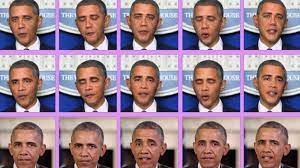New Deepfake Spotting Tool Proves 94% Effective – Here’s the Secret of Its Success

University at Buffalo deepfake spotting tool proves 94% effective with portrait-like photos, according to study.
University at Buffalo computer scientists have developed a tool that automatically identifies deepfake photos by analyzing light reflections in the eyes.
The tool proved 94% effective with portrait-like photos in experiments described in a paper accepted at the IEEE International Conference on Acoustics, Speech and Signal Processing to be held in June in Toronto, Canada.
“The cornea is almost like a perfect semisphere and is very reflective,” says the paper’s lead author, Siwei Lyu, PhD, SUNY Empire Innovation Professor in the Department of Computer Science and Engineering. “So, anything that is coming to the eye with a light emitting from those sources will have an image on the cornea.
“The two eyes should have very similar reflective patterns because they’re seeing the same thing. It’s something that we typically don’t typically notice when we look at a face,” says Lyu, a multimedia and digital forensics expert who has testified before Congress.
The paper, “Exposing GAN-Generated Faces Using Inconsistent Corneal Specular Highlights,” is available on the open access repository arXiv.
Co-authors are Shu Hu, a third-year computer science PhD student and research assistant in the Media Forensic Lab at UB, and Yuezun Li, PhD, a former senior research scientist at UB who is now a lecturer at the Ocean University of China’s Center on Artificial Intelligence.
Tool maps face, examines tiny differences in eyes
When we look at something, the image of what we see is reflected in our eyes. In a real photo or video, the reflections on the eyes would generally appear to be the same shape and color.
However, most images generated by artificial intelligence – including generative adversary network (GAN) images – fail to accurately or consistently do this, possibly due to many photos combined to generate the fake image.
Lyu’s tool exploits this shortcoming by spotting tiny deviations in reflected light in the eyes of deepfake images.
To conduct the experiments, the research team obtained real images from Flickr Faces-HQ, as well as fake images from www.thispersondoesnotexist.com, a repository of AI-generated faces that look lifelike but are indeed fake. All images were portrait-like (real people and fake people looking directly into the camera with good lighting) and 1,024 by 1,024 pixels.
The tool works by mapping out each face. It then examines the eyes, followed by the eyeballs and lastly the light reflected in each eyeball. It compares in incredible detail potential differences in shape, light intensity and other features of the reflected light.


Your Comment :